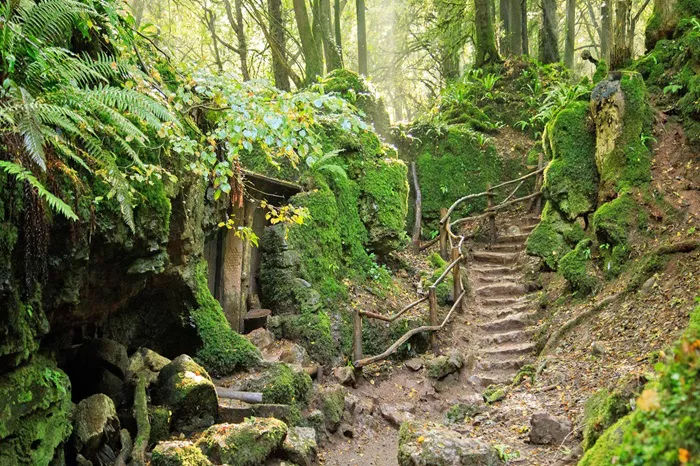Nestled between the River Severn and the River Wye in Gloucestershire, England, the Forest of Dean is a captivating blend of ancient woodlands, rich history, and vibrant culture. Spanning over 110 square kilometers, this area offers a unique experience for nature lovers, history enthusiasts, and adventure seekers alike. From its origins as a royal hunting ground to its role in modern cinema, the Forest of Dean continues to enchant visitors from around the world.
Encyclopedia Britannica
Historical Significance
A Royal Hunting Forest
The Forest of Dean’s history as a royal hunting forest dates back to before the Norman Conquest of 1066. Its dense woodlands and abundant wildlife made it an ideal location for monarchs to hunt deer and wild boar. This royal association has left a lasting legacy, with laws and traditions that have shaped the area’s development over centuries.
Industrial Heritage
Beyond its royal connections, the Forest of Dean has a rich industrial past. The area is known for its iron ore and coal mining, as well as timber production. Mining activities have been recorded since Roman times, with the discovery of over 3,000 Roman coins in Puzzlewood indicating the area’s long-standing significance.
The tradition of “freemining” is unique to the Forest of Dean. Freeminers are individuals granted the right to mine in the forest, a practice that has been regulated since the 17th century. This tradition continues today, preserving a unique aspect of the area’s cultural heritage.
Natural Beauty
Ancient Woodlands
The Forest of Dean is one of England’s ancient woodlands, covering over 110 square kilometers of mixed forest. The landscape is characterized by oak, beech, ash, and birch trees, creating a diverse and vibrant ecosystem. The forest’s age and biodiversity make it a haven for wildlife and a peaceful retreat for visitors.
Puzzlewood: A Magical Landscape
Puzzlewood is a highlight within the Forest of Dean, renowned for its unique rock formations, known as scowles, and moss-covered pathways. These geological features were formed millions of years ago through the erosion of limestone, creating a labyrinthine landscape that feels otherworldly. The area’s enchanting atmosphere has inspired many, including J.R.R. Tolkien, and has been featured in various films and TV shows.
Cultural Impact
A Filming Location for Iconic Productions
The Forest of Dean’s mystical landscapes have made it a popular filming location. Puzzlewood, in particular, has been featured in major films and TV series such as “Star Wars: The Force Awakens,” “Harry Potter and the Deathly Hallows,” “Doctor Who,” and “Merlin.” The area’s natural beauty provides a perfect backdrop for fantasy and adventure stories.
Influence on Local Folklore and Traditions
The forest’s deep roots in history and its secluded nature have given rise to a rich tapestry of local folklore. Legends of mythical creatures, hidden treasures, and ancient spirits are woven into the fabric of the community, adding a layer of mystique to the forest’s allure.
Recreational Opportunities
Outdoor Activities
The Forest of Dean offers a plethora of outdoor activities for all ages. Hiking and cycling trails wind through the forest, providing opportunities to explore its natural beauty. Symonds Yat Rock is a popular viewpoint, offering panoramic views of the River Wye and the surrounding landscape. The area is also renowned for birdwatching, with species like peregrine falcons, goshawks, and ospreys frequently spotted.
Family-Friendly Attractions
For families, the Forest of Dean Cycle Centre offers trails suitable for all skill levels, as well as facilities like cafes and picnic areas. Cannop Ponds is another family-friendly destination, ideal for leisurely walks, wildlife spotting, and enjoying the serene environment.
Wildlife and Conservation
Rich Biodiversity
The Forest of Dean is home to a diverse range of wildlife, including deer, badgers, foxes, and a variety of bird species. The forest’s unique habitats support rare species such as the greater and lesser horseshoe bats, making it a critical area for conservation efforts.
Conservation Efforts
Conservation initiatives in the Forest of Dean focus on preserving its natural habitats and biodiversity. Efforts include habitat restoration, wildlife monitoring, and public education programs to promote sustainable interaction with the environment. These initiatives ensure that the forest remains a thriving ecosystem for future generations.
Visitor Information
Practical Tips for Visitors
Parking: Designated parking areas are available throughout the forest, including at major attractions like the Forest of Dean Cycle Centre and Symonds Yat Rock.
Accessibility: Many trails and facilities are accessible to visitors with mobility challenges. The forest offers all-terrain mobility scooters and accessible picnic areas to accommodate all visitors.
Amenities: Cafes, restrooms, and visitor centers are conveniently located at key sites, providing comfort and information to enhance your visit.
Best Times to Visit
The Forest of Dean is a year-round destination, each season offering its own unique charm:
Spring: Witness the blooming of wild daffodils and bluebells, creating vibrant carpets of color across the forest floor.
Summer: Enjoy lush greenery and warm weather, perfect for outdoor activities and family outings.
Autumn: Experience the forest’s stunning fall foliage, with a kaleidoscope of reds, oranges, and yellows.
Winter: Discover the serene beauty of the forest’s frost-covered landscapes and enjoy peaceful walks in the crisp air.
Conclusion
The Forest of Dean is a treasure trove of natural beauty, historical significance, and cultural richness. Whether you’re exploring its ancient woodlands, delving into its industrial past, or simply enjoying the tranquility of its landscapes, the forest offers an unforgettable experience for every visitor. Its commitment to conservation and accessibility ensures that this enchanting destination will continue to inspire and delight for generations to come.

